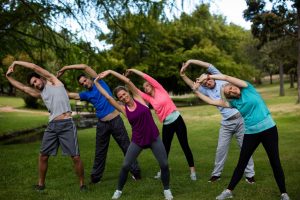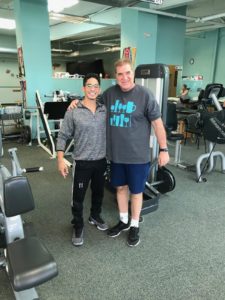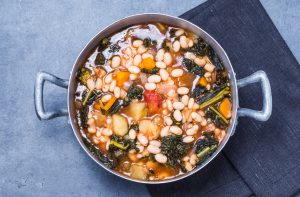Walking and running both seem simple enough- just put one foot in front of the other. However, in order to walk or run efficiently you must understand how to move your body. Use these simple tips to help you cross that finish line with ease!

Posture
How are you standing or sitting now as you read this? Think of a string running through your center to pull you straight up and maintain that tall posture. This way you are not leaning forward or backward. By paying specific attention to keeping your core tight, this will directly help your posture.
Stride Length
Maintain a short, quick stride when you are walking/running. When we plant our foot in front, the goal is to have the hips knee over the ankle. Rather than trying to reach forward with your foot, focusing on a faster turnover will help plant the foot properly. Not only is this more efficient movement, but it may help you prevent injury.
Stride Rate
This goes along with our stride length. A faster step will help you move more efficiently than trying to take longer steps. Specifically for running, an ideal stride rate is about 180 strides per minute (or 90 per foot). Slower stride rates may indicate more vertical movement, which is less efficient (wasting energy). If you listen to music, try a faster bpm and try to match the cadence – remember this will not change immediately and takes time to learn.
Arm Swing
When running, try keeping keep your elbows bent at about 90*. Your goal to avoid letting your arms creep up too high (think T-Rex arms) or shrugging the shoulders. As you’re moving, be sure to keep your arms at your sides and avoid letting them cross over in front. If you keep pumping those arms at your sides, your legs will follow!
Relax Your Shoulders & Hands
Take the tension out of your shoulders and hands. Relax your shoulders by keeping them down and away from your ears (think back to that long, tall posture). Avoid keeping a tight fist and open your hands to let them naturally swing at your sides.
By Louise Mills-Strasser, MS







